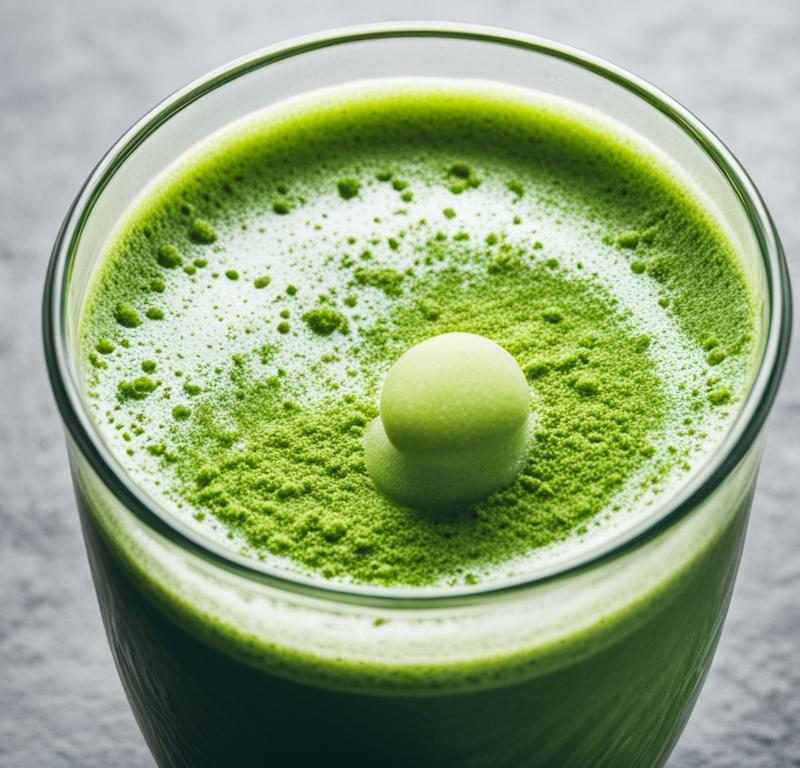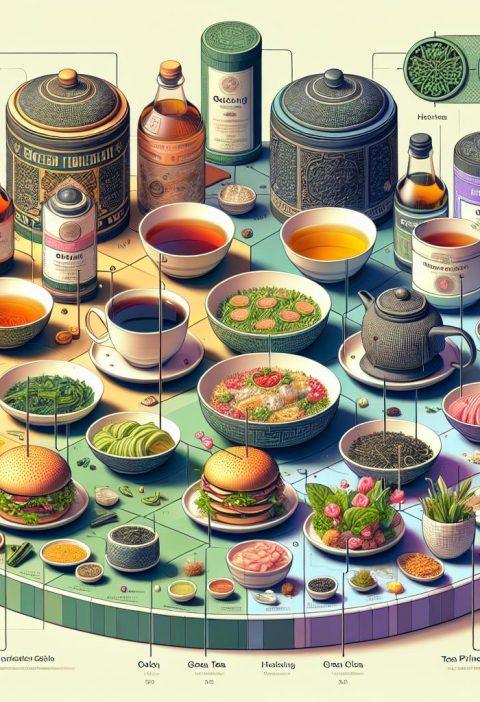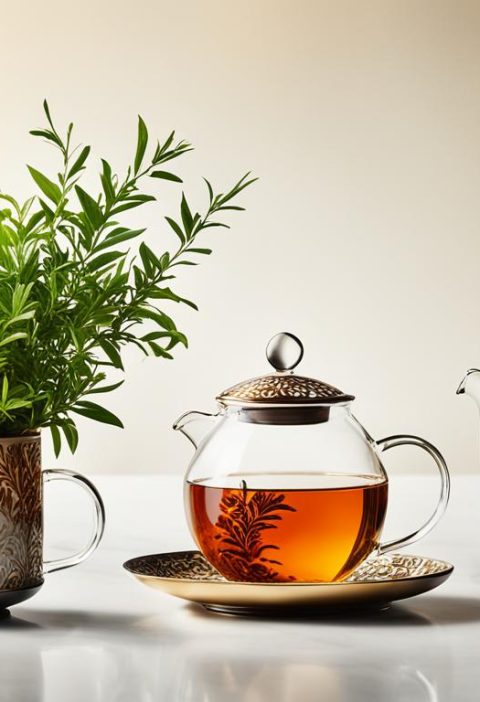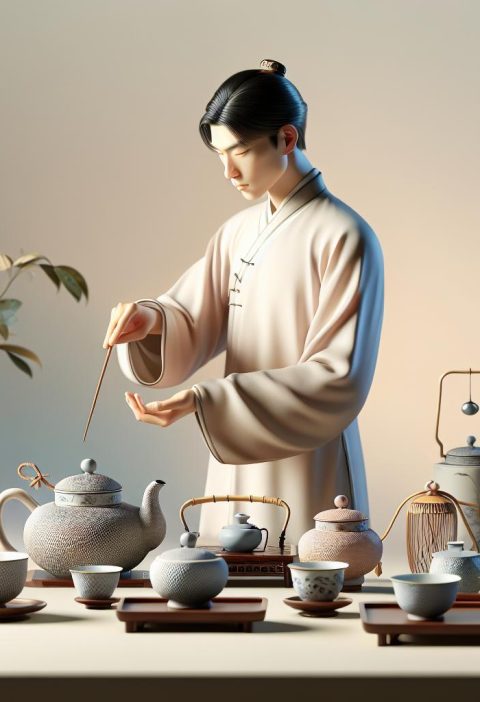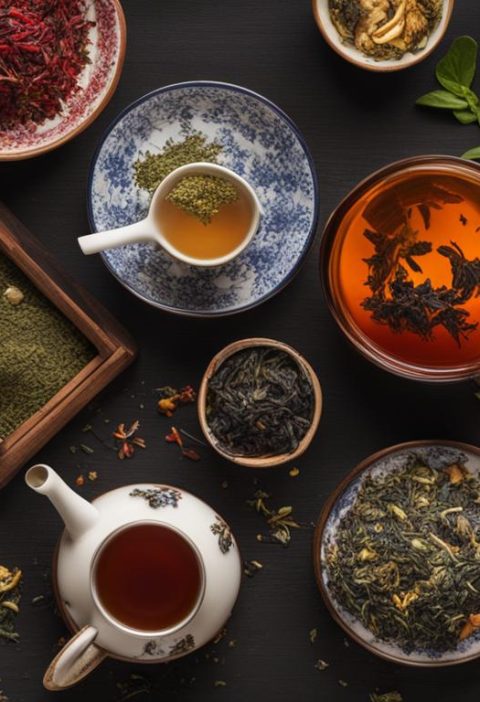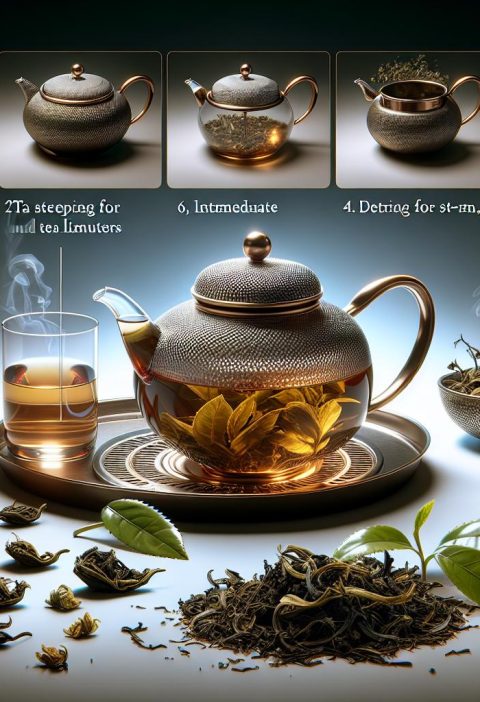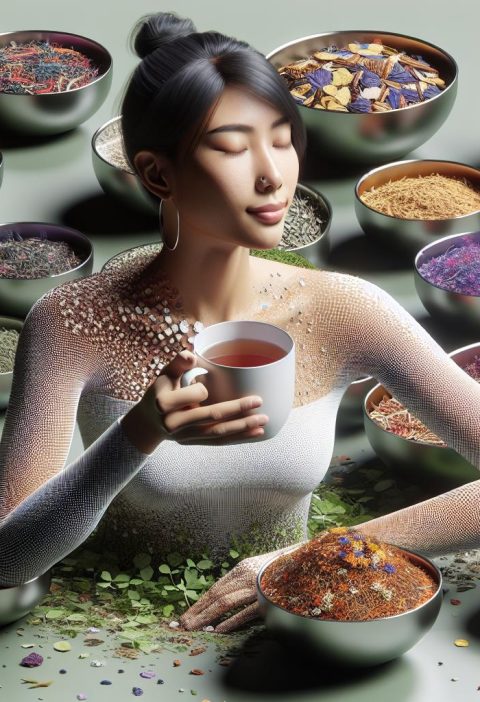In this guide, we will compare the costs of different green tea varieties to help you find affordable options. We’ll explore the prices of top green tea brands, analyze the cost-effectiveness of various green tea types, and provide a price comparison to help you make an informed decision.
When it comes to green tea, there are numerous varieties available, each with its own unique flavor and characteristics. However, the cost of green tea can vary significantly depending on factors such as the brand, type of tea, and quality. As a seasoned tea enthusiast, I have spent years exploring different green tea options and comparing their costs. In this guide, I will share my insights and expertise to help you navigate the world of green tea and find the best deals without compromising on quality.
Key Takeaways:
- Comparing costs of green tea varieties is essential to find affordable options.
- Top green tea brands may offer premium-quality teas but at a higher price.
- Analyzing the cost-effectiveness of various green tea types helps in making an informed decision.
- Price comparison is a useful tool for finding the best deals on green tea.
- Consider your budget and preferences when exploring budget-friendly green tea options.
Best Tasting Green Tea Varieties
When it comes to the best tasting green tea, several varieties stand out for their unique flavor profiles. Whether you prefer a smooth and fruity cup or a bold and savory brew, there is a green tea to satisfy your taste buds. Additionally, if you’re a fan of rich and sweet teas or the smooth creaminess of matcha, we have recommendations for you too.
Fukamushi Yamaga
One of the top green tea flavors that you must try is Fukamushi Yamaga. This Japanese green tea undergoes a unique steaming process, resulting in a deep and rich flavor. Its smooth and buttery taste profile makes it a favorite among green tea enthusiasts. The tea leaves are finely chopped, giving the brew a vibrant green color and a delightful texture. It’s a truly indulgent choice for those seeking a smooth and fruity green tea experience.
Gyokuro Cha Musume
For a bold and savory green tea, Gyokuro Cha Musume is an excellent choice. This shade-grown tea from Japan boasts a rich umami flavor and a smooth, mellow finish. The leaves are carefully grown in the shade, which enhances their sweetness and reduces bitterness. Gyokuro Cha Musume is a favorite among connoisseurs for its complex flavor profile and delicate aroma. It’s the perfect green tea for those who appreciate depth and nuance.
Sencha Saemidori
If you’re looking for a green tea that strikes the perfect balance between sweetness and richness, Sencha Saemidori is a great option. Its vibrant green color and refreshing taste make it one of the best green tea flavors available. Sencha Saemidori offers a smooth and fruity flavor, reminiscent of freshly cut grass and summer fruits. This popular Japanese tea is a beloved choice for its delicate yet invigorating taste.
Matcha Washimine
When it comes to smooth and creamy matcha, Matcha Washimine hits all the right notes. This high-quality powdered green tea from Japan has a luscious texture and a vibrant, vibrant green color. Matcha Washimine is made from shade-grown tea leaves, which enhances its sweetness and richness. Its smooth and creamy flavor makes it a versatile ingredient for lattes, desserts, and traditional matcha tea ceremonies.
These best tasting green tea varieties offer a range of flavors to suit every palate. Whether you prefer smooth and fruity, bold and savory, sweet and rich, or smooth and creamy, there is a green tea waiting to be discovered. Explore these flavors and elevate your tea-drinking experience to new heights.
Best Green Tea for Beginners
Are you new to the world of green tea? Don’t worry, we’ve got you covered. We understand that starting something new can be overwhelming, especially when it comes to choosing the right tea. That’s why we’re here to recommend the best green tea options for beginners.
Genmaicha
If you’re looking for an affordable and easy-to-prepare green tea, genmaicha is an excellent choice. This unique Japanese tea is a blend of green tea leaves and toasted rice, giving it a distinct and nutty flavor. Genmaicha is often referred to as “popcorn tea” due to its toasted rice kernels that resemble popped popcorn. It’s a great entry point into the world of green tea, offering a mild and comforting taste.
Hojicha
Another fantastic option for beginners is hojicha. This Japanese green tea stands out from the rest due to its roasting process, which gives it a rich and caramel-like flavor. The roasting also lowers the caffeine content, making hojicha a great choice for those who are sensitive to caffeine. It has a smooth and mellow taste that’s easy on the palate and perfect for those who prefer a less grassy and more toasty flavor.
Both genmaicha and hojicha are widely available and can be enjoyed hot or iced. They require simple preparation and are forgiving in terms of brewing times and temperatures. So, whether you’re a tea novice or just looking to try something new, genmaicha and hojicha are sure to delight your taste buds.
In the table below, we’ve summarized the key aspects of genmaicha and hojicha to help you make an informed decision:
| Tea Variety | Flavor | Caffeine Content | Preparation |
|---|---|---|---|
| Genmaicha | Nutty | Moderate | Steep 1-2 minutes at 175°F (79°C) |
| Hojicha | Toasty, Caramel-like | Low | Steep 1-2 minutes at 175°F (79°C) |
In summary, genmaicha and hojicha are the best green tea options for beginners. They are affordable, easy to prepare, and have unique flavor profiles that make them stand out from traditional green teas. So, go ahead and embark on your green tea journey with these delightful options.
Best Green Tea for Health Benefits
When it comes to harnessing the health benefits of green tea, certain varieties stand out as the best options. From antioxidants to nutrients, green tea offers numerous health advantages that can support your overall well-being. In this section, we’ll explore three remarkable green teas renowned for their specific health benefits: matcha, gyokuro, and bancha.
Matcha: A Powerhouse of Antioxidants
Matcha, a powdered green tea, is renowned for its high concentration of antioxidants, making it one of the best green teas for overall health. The shade-grown tea leaves are carefully ground into a fine powder, which preserves the nutrients and antioxidants, resulting in a vibrant green hue. Drinking matcha allows you to consume the whole tea leaf, maximizing the intake of polyphenols, catechins, and EGCG, which have been linked to numerous health benefits.
Some of the key health benefits associated with matcha include:
- Boosted immune system: Matcha contains properties that can help strengthen your immune system, allowing your body to fight off illnesses and infections more effectively.
- Enhanced mental clarity: Matcha contains L-theanine, an amino acid known to promote relaxation and improve focus. It can help you feel more alert and productive without the jittery side effects often associated with other caffeinated beverages.
- Detoxification: The high levels of chlorophyll in matcha are known to support liver detoxification, helping your body eliminate toxins and improve overall well-being.
- Anti-aging properties: Antioxidants in matcha play a crucial role in combating free radicals, which are detrimental to skin health. Regular consumption of matcha can contribute to a glowing, youthful complexion.
Gyokuro: A Source of Long-lasting Energy
Gyokuro, also known as “jade dew,” is a premium Japanese green tea with its unique cultivation method. The tea bushes are shaded for several weeks before harvesting, resulting in leaves that are rich in chlorophyll and amino acids. This shading process gives gyokuro its distinctive umami flavor and allows it to offer certain health benefits:
- Long-lasting energy: The combination of caffeine and L-theanine found in gyokuro provides a sustained release of energy, keeping you energized throughout the day without the crash often associated with other caffeinated beverages.
- Improved metabolism: The catechins present in gyokuro have been linked to increased metabolism, which may assist in weight management and fat oxidation.
- Calming effects: Gyokuro contains L-theanine, an amino acid known for its calming properties. It can help reduce stress, promote relaxation, and enhance mental clarity.
- Antioxidant-rich: Gyokuro is packed with antioxidants that protect the body against oxidative stress and promote overall health and well-being.
Bancha: Soothing and Digestive-friendly
Bancha is a Japanese green tea made from more mature tea leaves, harvested later in the season. With a milder flavor and lower caffeine content compared to other green tea varieties, bancha offers specific health benefits that cater to individuals seeking a gentle and soothing experience:
- Soothing effects on the stomach: Bancha contains tannins that can help ease indigestion, sooth stomach inflammation, and promote digestive health.
- Rich in minerals: Bancha contains a variety of minerals, including calcium, potassium, and magnesium, which are essential for maintaining healthy bones and overall bodily functions.
- Hydration support: Bancha’s lower caffeine content makes it an ideal choice for individuals looking for a hydrating and refreshing drink throughout the day.
- Promotes relaxation: Bancha has a tranquil and earthy flavor that can provide a calming effect, making it an excellent option for winding down after a long day or before bedtime.
When considering the health benefits of green tea, matcha, gyokuro, and bancha are exceptional options that offer unique advantages depending on your specific needs. Incorporating these green teas into your daily routine can contribute to a healthier, more vibrant lifestyle.
| Green Tea Variety | Health Benefits |
|---|---|
| Matcha | High concentration of antioxidants, boosts immune system, enhances mental clarity, supports detoxification, anti-aging properties |
| Gyokuro | Long-lasting energy, improved metabolism, calming effects, antioxidant-rich |
| Bancha | Soothing effects on the stomach, rich in minerals, hydration support, promotes relaxation |
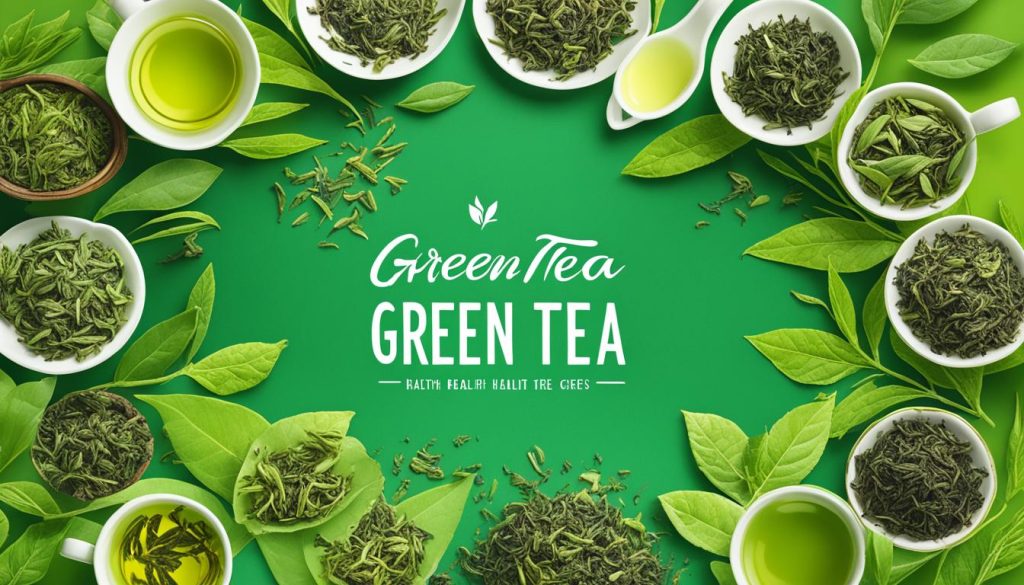
Best Green Tea to Drink Before Bed
If you enjoy a cup of tea before bed, we’ll recommend the best green tea options that promote relaxation and a peaceful night’s sleep.
- Kukicha: Also known as twig tea, kukicha is a Japanese green tea made from tea stems. It has a unique mild flavor with a hint of sweetness and a subtle straw-like aroma. What makes kukicha an excellent choice for evening relaxation is its low caffeine content, making it less likely to disrupt your sleep.
- Bancha: Made from older tea leaves, bancha is another fantastic green tea variety to enjoy before bed. It has a distinct earthy flavor and a soothing aroma. Bancha contains lower levels of caffeine, allowing you to unwind and relax without interfering with your sleep quality.
Both kukicha and bancha offer calming properties that can help you achieve a peaceful state of mind before bedtime. These green tea varieties are known for their gentle taste profiles and the ability to promote relaxation.
To further enhance your nighttime ritual, consider adding a touch of honey or a sprinkle of chamomile flowers to your cup of green tea. These natural additions can amplify the calming effects of your bedtime tea.
So, if you’re looking for the best green tea options to enjoy before bed, kukicha and bancha are the perfect choices. Unwind, relax, and savor the soothing qualities of these delightful teas for a restful night’s sleep.
Best Green Tea for Energy
When it comes to finding the best green tea for an energy boost, two varieties stand out: Gyokuro and Matcha. Both options offer a high caffeine content and unique qualities that can help you start your day with vigor.

1. Gyokuro
Gyokuro is a premium Japanese green tea known for its rich flavor and vibrant green color. It is shade-grown for several weeks before harvest, creating a tea with higher caffeine levels and a unique amino acid called L-theanine. This combination provides sustained energy throughout the day while promoting a sense of calmness and focus. The increased caffeine content in Gyokuro helps stimulate the mind and body, making it an ideal choice for those looking for an energy boost. However, due to its unique cultivation process, Gyokuro tends to be more expensive compared to other green tea varieties.
2. Matcha
Matcha is a powdered green tea that has gained popularity worldwide for its vibrant green color and numerous health benefits. It is made by grinding shade-grown tea leaves into a fine powder, allowing you to consume the entire leaf and benefit from its high caffeine content. Matcha offers a concentrated dose of caffeine, providing a quick and effective energy boost. Additionally, it contains L-theanine, which helps promote calmness and focus. Matcha can be prepared as a traditional tea or incorporated into various recipes, making it a versatile option for those seeking an energy boost.
To help you better understand the caffeine content in Gyokuro and Matcha, we have provided a comparison table below:
| Green Tea Variety | Caffeine Content |
|---|---|
| Gyokuro | 20-30 mg per 8 oz cup |
| Matcha | 30-70 mg per 8 oz cup |
As shown in the table, Matcha generally contains higher levels of caffeine compared to Gyokuro. However, it’s important to note that individual caffeine sensitivity may vary, and factors such as steeping time, water temperature, and the amount of tea used can also influence caffeine levels.
So, whether you prefer the sustained energy provided by Gyokuro or the quick boost from Matcha, both varieties offer excellent options for starting your day with a revitalizing cup of green tea.
Best Organic Green Tea Farmers
When it comes to choosing the best organic green tea, it is important to consider the farmers who produce these pesticide-free teas. We are proud to feature some of the top organic green tea farmers and their exceptional products:
1. Mr. Sakamoto’s Organic Gyokuro
Mr. Sakamoto is renowned for his organic gyokuro, a high-quality shade-grown Japanese green tea. What sets his tea apart is the meticulous cultivation process that involves shading the tea leaves for extended periods, which enhances the flavor and nutrient content of the tea. Mr. Sakamoto’s commitment to organic farming practices ensures that his gyokuro is grown without the use of pesticides or chemicals, making it a safe and sustainable choice for tea enthusiasts.
2. Organic Sencha from the Tanaka Family
The Tanaka Family has been producing exceptional organic sencha for generations. Their commitment to organic farming methods results in a delicious and pesticide-free tea that offers a vibrant flavor and rich aroma. By meticulously hand-picking and processing the tea leaves, the Tanaka Family preserves the natural freshness and quality of the tea. Their dedication to sustainability and eco-friendly practices is reflected in every cup of their organic sencha.
3. Organic Tea Cooperative of Kagoshima
The Organic Tea Cooperative of Kagoshima brings together a collective of organic green tea farmers who are passionate about producing high-quality teas without the use of pesticides. Their dedication to sustainable farming practices ensures that each cup of their organic green tea delivers exceptional taste and flavor. By supporting this cooperative, you are not only enjoying premium organic tea, but also contributing to the preservation of the environment and the wellbeing of local communities.
Discover the unique flavors and aroma of best organic green teas produced by these exceptional farmers. Their commitment to organic farming practices and dedication to quality ensures that each sip is a delight for the senses. By choosing organic green tea, you are not only prioritizing your health but also supporting sustainable agricultural practices.
Market Overview of Green Teas
When it comes to the vast green tea market, it’s crucial to understand key quality indicators and avoid generic teas with ambiguous names. Specific green tea names not only signify higher quality but also offer regional distinctions and cultural significance. In this section, we’ll provide a comprehensive market overview of green teas, empowering you to make informed choices and explore the variety available.
Quality indicators play a pivotal role in assessing the value and taste of green teas. When searching for premium options, look for indicators such as the tea’s growing region, processing method, and cultivation practices. These factors heavily influence the tea’s flavor, aroma, and overall quality.
While generic teas might seem convenient, they often lack the individuality and distinctiveness found in teas with specific names. Opting for green teas with specific names allows you to dive into the rich history and traditions associated with each variety. Moreover, specific names ensure transparency and credibility, as they are tied to well-established producers known for their expertise.
Influence of Quality Indicators on Green Tea
Let’s delve deeper into some key quality indicators that can help you navigate the green tea market:
- Region: Different regions produce green teas with unique flavor profiles. For example, Japanese green teas, such as Gyokuro and Sencha, are known for their vibrant umami flavors, while Chinese green teas, like Dragon Well and Bi Luo Chun, offer a wide range of tastes, from nutty to floral.
- Cultivar: The cultivar, or tea plant variety, used to produce green tea impacts its aroma, flavor, and texture. For instance, the Yabukita cultivar is widely grown in Japan and is known for its vegetal and grassy taste, while the Long Jing cultivar in China lends a chestnut-like flavor to the tea.
- Harvesting Season: The time of year when green tea is harvested affects its taste. Spring harvest teas are often considered the highest quality due to their tender leaves and fresh, delicate flavors. Autumn harvest teas, on the other hand, tend to be bolder and have a stronger aroma.
By paying attention to these quality indicators, you can find green teas that suit your preferences and provide a truly exceptional tea-drinking experience.
As the demand for green tea continues to grow, it’s essential to explore the market and discover the diverse range of options available. Whether you’re seeking a delicate Japanese Sencha or a robust Chinese Dragon Well, there is a green tea out there to satisfy every palate.
To further illustrate the variety in the green tea market, here’s a visually appealing comparison of some popular green tea varieties:
| Green Tea Variety | Origin | Flavor Profile |
|---|---|---|
| Gyokuro | Japan | Rich, umami, seaweed |
| Dragon Well | China | Nutty, chestnut, buttery |
| Matcha | Japan | Mellow, vegetal, creamy |
| Bi Luo Chun | China | Floral, fruity, light |
Consider the Cultivar
When it comes to selecting the perfect green tea, one factor to consider is the cultivar. The cultivar refers to the specific variety of tea plant from which the leaves are harvested. Each cultivar offers its own unique flavor profile, aroma, and texture, adding to the overall tea experience.
One of the fascinating aspects of green tea is the flavor diversity found in different cultivars. From delicate and floral to bold and grassy, each cultivar brings distinct characteristics to the tea. For example, the cultivar Yabukita is known for its rich umami flavor, while Okumidori offers a sweet and vegetal taste. By exploring different cultivars, you can discover a wide range of flavors and find the one that best suits your preferences.
In addition to flavor, the cultivar also influences the aroma and texture of green tea. Some cultivars produce teas with a fragrant, floral aroma, while others have a grassy or seaweed-like scent. Similarly, the texture can vary from light and refreshing to thick and creamy, depending on the cultivar used. These factors contribute to the overall sensory experience of drinking green tea and make each cultivar unique in its own way.
When choosing your green tea, be sure to pay attention to the cultivar. Experiment with different varieties to explore the diverse flavors, aromas, and textures that each cultivar offers. Whether you prefer a delicate floral tea or a bold grassy brew, considering the cultivar will help you find the perfect green tea to suit your taste.
